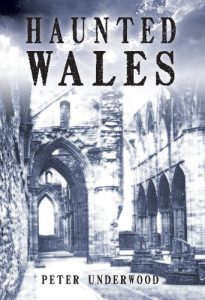Words by Greg Mansfield

Image by Greg Mansfield
North Wales is a beautiful region where majestic mountains meet rugged coastline. Encompassing the principal areas of Gwynedd, Conwy County Borough, and the island of Anglesey (Ynys Môn), this part of Wales is famous for its outstanding natural beauty. It includes the picturesque peaks and valleys of Eryri National Park (Snowdonia) and areas of outstanding natural beauty on the Llŷn Peninsula and the Isle of Anglesey. Its rich history is anchored by the castles of King Edward I at Caernarfon, Conwy, Harlech, and Beaumaris. This largely Welsh-speaking and rural region is not only beautiful, it’s very haunted.
Here are my suggestions of the best places to visit when you’re there.
Haunted Places in North West Wales
Beaumaris Castle
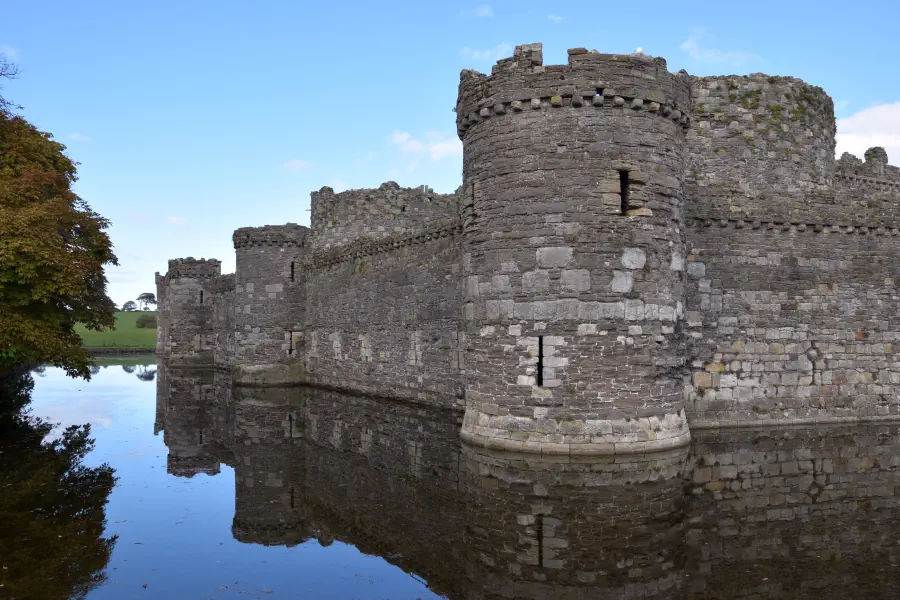
Image by Greg Mansfield
Location: Castle St, Beaumaris
Open: Daily, see website for times
Admission Fee: Yes
Parking: Pay parking nearby
Website: cadw.gov.wales/visit/places-to-visit/beaumaris-castle
On the windswept Isle of Anglesey stands Beaumaris Castle, a medieval fortress that never quite got finished. Visitors come here from around the world, and not just for its amazing architecture. Many believe that restless spirits haunt these ruins.
Long before the first stone of the castle was laid, Vikings occupied this area, naming their settlement Porth y Wygyr—the Port of the Vikings. They left the region in the 11th century.
In the late 1200s, England and Wales were locked in bitter conflict, and King Edward I of England had big plans. After crushing Welsh resistance, he wanted to make sure it stayed that way. Beaumaris Castle would be his final fortress in North Wales—and his most ambitious one.
The king chose a flat, marshy area along the Menai Strait and gave it the French name Beau Mareys, meaning “fair marsh.” The spot was perfect—any ship passing through these waters would sail right past the castle’s watchful eye.
In 1295, Edward brought in Master James of St. George, a highly skilled architect. The castle’s design was brilliant. Beaumaris featured two rings of defensive walls, one inside the other. The outer wall sat lower than the inner one, creating overlapping fields of weapon fire that would trap any attacker in a deadly crossfire. An 18-foot-wide moat surrounded it all, part of which survives today. And a tidal dock allowed supply ships weighing up to 40 tons to sail right up to the main gate.
Before the age of gunpowder, Beaumaris Castle would have been nearly impossible to breach.
But reality crashed the party. By 1298, Edward’s treasury was empty. Wars in Scotland and Gascony demanded funds, and Beaumaris’s further construction was cancelled. The south gatehouse never rose to its planned height, and six towers in the inner ward stopped halfway up. The castle that should have been Edward’s crowning achievement became a loose end.
Despite this, the unfinished fortress saw plenty of action. Welsh forces under Owain Glyndŵr seized it in 1403, though the English took it back two years later. During the English Civil War, Royalist troops held out here until 1648. The castle also witnessed darker moments. In 1593, guards executed William Davies, a Welsh Catholic priest, within these walls.
Today, Beaumaris holds UNESCO World Heritage status. Tourists wander through its gates, cameras ready. But some leave with more than just photos. Many visitors report an uncomfortable sensation—as if unseen eyes are tracking their every move. Others feel sudden waves of sadness or isolation that seem to come from nowhere.
The Chapel is the most active area. People walking through this space often hit pockets of freezing air that appear and disappear in seconds. Even stranger, visitors sometimes hear voices rising in ghostly prayer or chant. The sounds start suddenly, then fade away just as quickly. Paranormal investigators have even captured these phantom hymns on recording equipment when no one could hear them.
The rest of the castle is plagued by eerie activity, too. Heavy footsteps echo behind visitors, shadow figures dart around corners and, most disturbing of all, anguished screams seem to come from everywhere and nowhere at once.
No one knows for sure who or what haunts Beaumaris Castle. The spirits might be soldiers who died defending the walls. Perhaps they’re prisoners who suffered and died in the dungeon. Or they could be all of the above. And when conditions are just right, their spirits come alive again.
The Blue Lion Inn
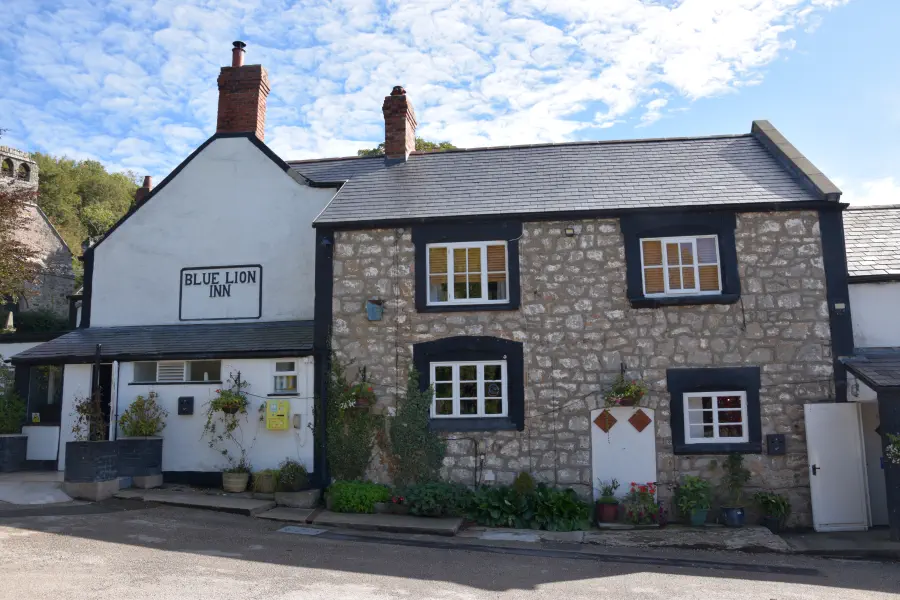
Image by Greg Mansfield
Location: Cwm Dyserth, Rhyl
Open: Daily, 12:00 Noon – 11:30pm
Admission Fee: No, it’s a pub and inn
Parking: Free
Website: bluelion.wales
The Blue Lion Inn—or yr Llew Glas as locals call it—holds the title of Wales’ second oldest free-house. And while visitors today enjoy freshly poured pints in its refurbished dining rooms, the pub remembers a much darker past.
The building’s story starts back in 1646 when it served as a simple farmhouse. Later, in the 17th century, monks used it as a boarding house. (It’s believed the monks dug a tunnel to connect the building to the nearby Church of St Mael and St Sulien so they could move back and forth in private.) But it’s the farmhouse period that gave birth to the legend still talked about today.
The tale centres on a young man named John Henry. According to local folklore, Henry met a brutal end at the hands of his own father and brother on this property. Neighbours heard terrible arguments echoing from the farmhouse. After one such row, John Henry went missing. His family had a ready explanation, however: he’d left to start fresh somewhere else. But the neighbours didn’t buy it; they knew it was suspicious.
The mystery might have faded into obscurity if not for a chilling discovery in the 1800s. Workers renovating the Church of St Mael and St Sulien stumbled upon the skeleton of a young man lying on top of a coffin inside a grave. The locals immediately believed they’d found Henry’s body.
Today, John Henry apparently still walks the halls of The Blue Lion Inn. Staff and visitors report regular sightings of his ghost, and the evidence goes beyond eyewitness accounts. More recently, security footage caught something unsettling: a light sitting on the bar suddenly flew across the room and smashed to the floor. No one was near it. The pub’s owners attribute the incident to Henry’s ghost.
John Henry isn’t the only supernatural presence at The Blue Lion. There’s also a gentler spirit here—witnesses describe a kind-looking elderly woman wearing a blue dress who appears from time to time. Unlike John Henry’s restless energy, she seems peaceful and protective of the place.
Past landlords and guests have also reported seeing mysterious orbs floating through rooms. Strange sounds drift down from the empty upper floors when no one’s upstairs. Cold spots appear out of nowhere, and more than one visitor has felt their neck hairs stand on end while sitting alone in the pub.
Conwy Castle

Image by Greg Mansfield
Location: Rose Hill St, Conwy
Open: Daily, 9:30 am to 5:00 pm
Admission Fee: Yes
Parking: Pay parking
Website: cadw.gov.wales/visit/places-to-visit/castell-conwy
Imagine a mighty stone fortress rising from the wild Welsh coastline, its eight massive towers reaching toward the sky as boldly as they did seven centuries ago. This is Conwy Castle—a UNESCO World Heritage Site that’s managed to keep its imposing presence through hundreds of years of war, rebellion, and royal drama.
Between 1283 and 1287, King Edward I of England and his master architect, James of St. George, raised this fortress as part of Edward’s plan to control Wales. The project was massive, costing roughly £15,000—an astronomical amount back then—and included not just the castle but the town walls that still surround Conwy today.
Conwy Castle saw real action—the fortress held strong during the Welsh rebellion led by Madog ap Llywelyn in 1294–95. In 1399, King Richard II took shelter within its walls during his own troubled times. Later, during the English Civil War, Royalist forces held the castle until finally surrendering to Parliament in 1646.
All that violence and history has left more than just stone ruins behind. Conwy Castle has earned a reputation as a haunted place, and visitors report some genuinely spooky encounters.
The most common sighting is of a monk dressed in dark, hooded robes. He appears throughout the castle. This makes sense when you learn that a Cistercian monastery once stood on this very site before Edward I built this fortress. People walking through the castle chapel often smell burning incense—even though no incense is there. Some visitors have even reported seeing two monks who appear to float above the ground.
There’s also a Woman in White. This sad figure wears a long, pale dress and glides silently along the castle battlements, sometimes staring out to sea. Who she was and what happened to her remains a mystery.
Perhaps the most unsettling spirit is the Headless Soldier. Dressed in medieval armour, this phantom appears with the sound of clanking metal—a chilling reminder of the castle’s violent past.
Those aren’t the only strange things happening at Conwy Castle. Visitors hear phantom footsteps echoing through empty corridors. And the laughter and footsteps of children are heard in areas where no children are present.
The Grapes Hotel

Image by Carolyn Mansfield
Location: Maentwrog, Blaenau Ffestiniog
Open: Daily (see website for times)
Admission Fee: No, it’s a hotel and restaurant; table booking recommended
Parking: Free
Website: grapeshotelsnowdonia.co.uk
The Grapes Hotel, Bar & Restaurant, in the village of Maentwrog in Snowdonia National Park (Eryri), is a family-run business that isn’t just a place to eat and sleep—it’s a Grade II listed building with a history that stretches back centuries.
The Grapes started life as a coaching inn in the 1600s, when tired horses and weary travellers would pull up for rest and refreshment. The hotel’s cellar walls date back to the 13th century, making them about 400 years older than the inn itself!
The same family has run The Grapes Hotel since 1830.
If you visit today, look down as you walk through the public bar doorway. You’ll see a stone carved with the name ‘MARCUS.’ This isn’t just any rock. Historians believe it came from Tomen-y-Mur, an ancient Roman fort in the area. The stone made a journey through time—first as part of the fort, then built into the local church, and finally ending up here at The Grapes.
When a building has been around this long, ghost stories tend to follow. At The Grapes, guests and staff report encounters that can’t be easily explained away.
The most common tale involves a ghost with a love for music. People say they’ve heard piano playing coming from the residents’ landing, even when no one’s at the keys. There’s also a little old lady dressed in Victorian clothing who appears downstairs. Staff have spotted her more than once.
Sometimes the paranormal activity gets more physical. A former bartender remembers the night a tall stack of dishes in the kitchen suddenly crashed to the floor. No one was near them; there was no explanation.
The hotel doesn’t make a big fuss about its paranormal stories. But if you’re curious and ask the right staff member—especially one who’s had their own strange experience—they’ll often share what they’ve seen or heard.
Gwrych Castle
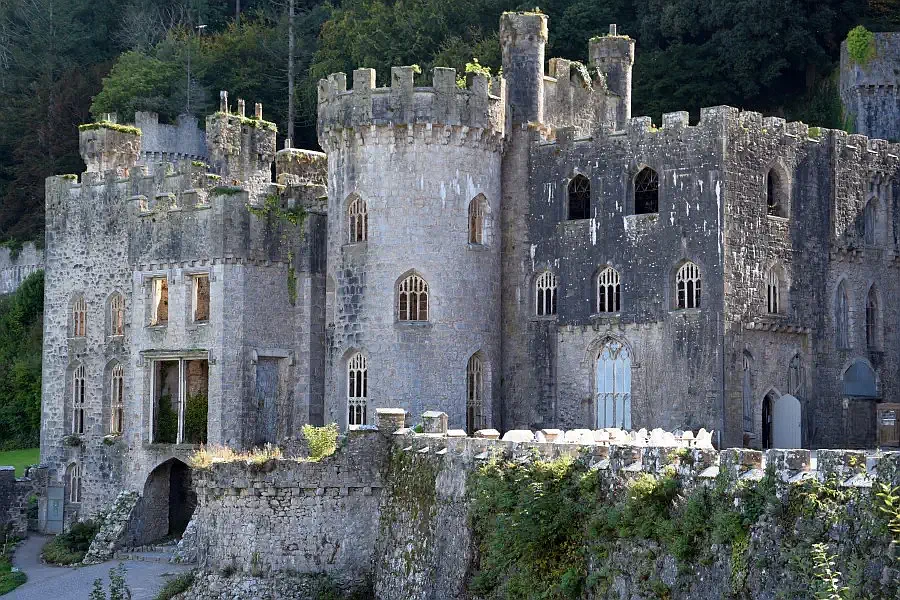
Image by Greg Mansfield
Location: Location: Maentwrog, Blaenau Ffestiniog
Open: Daily (see website for times)
Admission Fee: Yes
Parking: Pay parking
Website: gwrychcastle.co.uk
Gyrich Castle is a Gothic Revival structure that sprawls on a hillside overlooking the rugged North Wales coastline. The castle is more fantasy than authentic fortress, however. It started taking shape between 1812 and 1819, though it took four decades to fully complete. Lloyd Hesketh Bamford-Hesketh, a wealthy landowner, started construction as a tribute to his mother’s ancestors. He built upon an earlier house that already stood on the site, transforming it into a huge, romantic residence.
What makes Gyrich Castle stand out is that it’s considered one of the finest examples of medieval-revival architecture in Europe. The builders didn’t just slap together a romantic fantasy—they studied and recreated authentic medieval design elements with remarkable accuracy. Today, it holds Grade I listed status, recognizing its historical importance.
When Countess Winifred Bamford-Hesketh of Dundonald inherited the estate in 1894, she poured her heart into maintaining it for over thirty years. When she died in 1924, the castle was bequeathed to King George V as a royal residence. He politely declined, however. The gift might have seemed generous, but maintaining a massive Welsh castle probably wasn’t high on the royal to-do list.
During World War II, Gwrych Castle served a noble purpose. The estate became a temporary home for 200 Jewish refugee children rescued through the Kindertransport programme. These walls, which had sheltered one wealthy family for generations, opened their doors to children fleeing unimaginable danger.
Sadly, the castle’s fortunes declined after the war. It closed to visitors in 1987 and quickly fell into decay. Vandals and looters stripped away fixtures and fittings, leaving the building badly damaged. Since then, a dedicated trust has taken charge of restoration efforts, slowly bringing Gwrych back from total ruin.
Walk through Gwrych Castle today, and you might not be alone. This crumbling fortress has earned its reputation as a very haunted location, with multiple spirits reportedly calling it home.
Countess Winifred herself apparently couldn’t bear to leave. Visitors and staff regularly report seeing a woman in white—her ghostly form peering through dusty windows in the abandoned sections of the castle. Some hear her sobbing, forever grieving for the home she loved so deeply and ultimately lost. Her estranged husband, the Earl of Dundonald, is said to haunt the grounds as well.
But these aren’t the only spirits that wander this place. Keep your eyes open for:
The Lady in Red – She’s been spotted gliding through the old ballroom, lost in an eternal dance. Some visitors have heard her shouting “Get out!” in no uncertain terms. Perhaps she’s tired of all the attention.
The Grey Lady – This silent spirit drifts through the gardens where she tragically took her own life. She seems less interested in the living, lost in her own sorrowful world.
The Butler – Staff members have encountered this unfortunate soul on the staircase where he died. He still seems to be going about his duties, perhaps unaware that his service ended long ago.
The castle is also alive with unexplained activity:
- Shadow figures dart around corners and disappear when you look directly at them
- Footsteps echo through empty corridors with no one there to make them
- Doors slam shut on their own, sometimes with considerable force
- Temperature drops hit visitors without warning, turning warm spaces icy cold.
Gwydir Castle
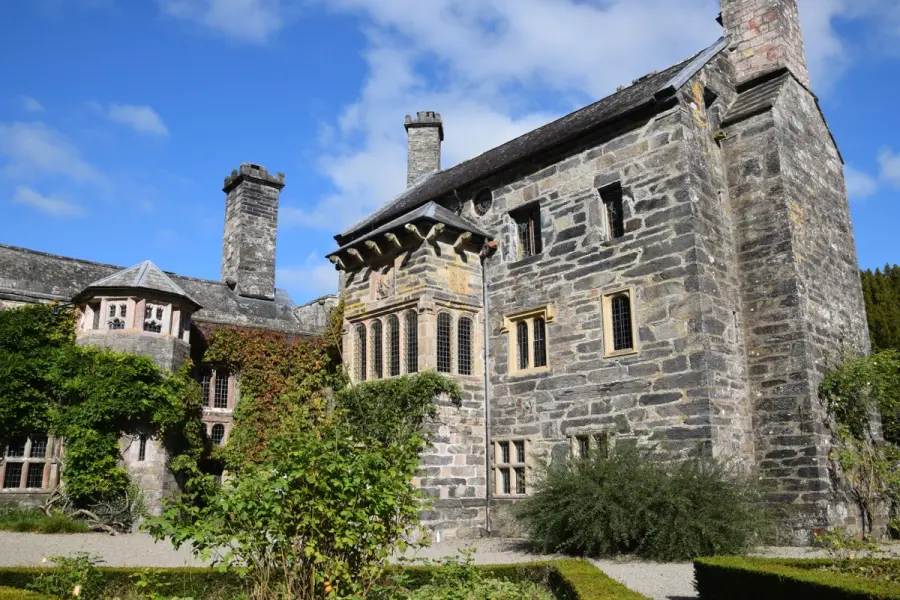
Image by Greg Mansfield
Location: Llanrwst, Snowdonia
Open: Most days (see website for times)
Admission Fee: Yes
Parking: Free
Website: gwydircastle.co.uk
Due to its rich, historic atmosphere and many ghosts, Gwydir Castle is one of my favourite haunted places in North Wales. You’ll find it tucked against the tree-covered slopes of Gwydir Forest. But don’t let the name fool you—this isn’t a medieval castle with towers and battlements. Instead, it’s an elegant Tudor manor house that happens to be fortified. Locals will tell you it’s one of the most haunted places in Wales.
People have been building on this site since 600 AD. Around 1500, Meredith ap Ieuan ap Robert decided to rebuild the existing house and turn it into something special. He founded the Wynn dynasty here, and his descendants would become some of the most powerful people in Wales during Tudor and Stuart times. They claimed royal blood, tracing their family line back to the ancient Kings of Gwynedd.
Meredith got creative with his building materials. When the nearby Abbey of Maenan was dissolved, he salvaged what he could—including a stunning spiral staircase that still stands today. Over the centuries, Gwydir Castle welcomed impressive visitors. King Charles I stayed here in 1645, and in 1899, the Duke and Duchess of York (later King George V and Queen Mary) came to visit.
The Wynn family owned Gwydir for over 400 years. But in 1921 they sold the property. Just one year later, disaster struck. A massive fire tore through the Solar Tower, leaving much of the building in ruins. As the castle crumbled, piece by piece, its treasures were sold off. The most valuable loss was the wooden panels from the 1640s dining room, which ended up in the hands of newspaper tycoon William Randolph Hearst.
For decades, the castle sat abandoned and decaying. Then in 1994, Judy Corbett and her husband Peter Welford saw the ruined building and decided to take on an enormous challenge. They bought Gwydir Castle and started the long process of bringing it back to life, including adding beautiful gardens to its surroundings. Their most impressive achievement was tracking down the missing dining room panels at the Metropolitan Museum of Art in New York and convincing the museum to return them. Corbett later wrote about their adventure in her memoir, Castles in the Air.
With centuries of dramatic history packed into these walls, it’s no surprise that Gwydir Castle has a haunted reputation. People have been reporting ghost sightings here since the 1800s.
The most famous spirit is known as the Grey Lady or White Lady. She appears in the north wing, particularly in the paneled corridor connecting the Hall of Meredith and the Great Chamber. This area used to be called the “Ghost Room,” which should tell you something.
According to local legend, she was a young servant girl who caught the eye of Sir John Wynn (either the first or fifth baronet—stories vary). When their secret relationship became inconvenient, Sir John supposedly murdered her. He then had her body hidden inside a chimney breast, in a secret space called a Priest’s Hole.
What makes this story particularly chilling? Visitors sometimes report a terrible smell of decay in that corridor, along with sudden cold spots. Some people have even felt someone tap them on the shoulder when no one else was there.
But she’s not the only ghost wandering Gwydir’s halls:
Sir John Wynn himself apparently still walks the castle. People have spotted him on the spiral staircase between the Solar Hall and the Great Chamber.
Lady Margaret Cave, Sir John’s unhappy wife, seems to have stayed behind too. During the early days of renovation in the 1990s, owner Peter Welford experienced a strange series of accidents. Some believe Lady Margaret’s angry spirit was trying to harm him.
A ghostly dog has been seen roaming the castle. Years ago, during excavation work, workers actually found a dog’s skeleton in the basement.
Children’s voices echo through the building. Visitors and staff have heard the sound of young ones crying when no children are around.
Unlike many historic properties, Gwydir Castle remains a private home. However, the owners welcome visitors during the day. If you’re feeling brave, you can even book an overnight stay in one of the historically furnished bedrooms, like the Duke of Beaufort’s Chamber or the King’s Room.
When my wife and I visited Gwydir Castle in 2025, we didn’t see or smell any of its spirits. But we bumped into 30 members of a film crew who were preparing for the making of a feature film in the manor. We tried to find out which movie they were working on, but it was a secret they wouldn’t reveal.
Penrhyn Old Hall

Image by Carolyn Mansfield
Location: Penrhyn Old Rd, Penrhyn Bay, Llandudno
Open: Daily, see website for times
Admission Fee: No, it’s a pub and restaurant
Parking: Free
Website: penrhynoldhall.co.uk
When you step through Penrhyn Old Hall’s doors, you’re walking into more than a thousand years of Welsh history—complete with hidden priests, a tragic murder, and lots of ghosts that refuse to leave.
The story begins in the 8th century, when Prince Roderick Moelwynog of Wales built a palace on this very spot. Fast forward to the 1300s, and records from King Edward III’s reign mention the Penrhyn family living here. But the building you see today really took shape during the Tudor period. The oldest section still standing was finished in 1422.
The hall’s darkest chapter unfolded during Queen Elizabeth I’s reign. The powerful Pugh family owned the property then, and they faced a serious problem: they were Catholic in a time when only Protestantism was legal. Breaking this law could cost you your life.
So, the Pughs turned their home into a secret refuge for Catholic priests. If you visit the Tudor Bar in the Old Hall today, you can still see the fireplace that conceals a “priest hole”—a cramped hiding spot where clergymen would squeeze themselves into during government raids.
One priest who found shelter here, William Davies, was unlucky enough to be discovered. Authorities captured him and, in 1593, he was executed at Beaumaris Castle in the brutal manner reserved for traitors: hanged, drawn, and quartered. Years later, someone discovered a withered human hand hidden somewhere in the hall. People believe it was cut from Davies’ body—a grim relic of those cruel times.
The hall’s glory days eventually faded. By 1739, it had been reduced to a simple farmhouse. Over the following centuries, it served as an antique shop, a museum, and a hotel before becoming the pub and restaurant that welcomes guests today.
Penrhyn Old Hall’s staff and visitors regulary report encounters with several spirits. The saddest ghost here might be the young girl from the Pugh family who appears on the stairway. Local stories say her own sisters killed her to stop her from marrying someone outside their Catholic faith. Imagine loving someone so much that it costs you your life, then spending eternity on the stairs where it all ended.
A monk wanders the passage above the Baronial Hall. Given the building’s history as a priest hideout, this spirit probably has strong ties to those dangerous Elizabethan days. Meanwhile, an old woman makes herself comfortable by the fireplace in the Tudor Bar. Guests watch her sit quietly before she stands and climbs the stairs, vanishing as she goes.
The hall also hosts two military ghosts, both with serious attitude problems. One angry soldier haunts the old dance floor, furious that he never got to fight in his war. The other is a bad-tempered young man who claims the Function room’s seating area as his territory. Disturb him at your own risk.
Not all the spirits at the Old Hall are so grumpy. A mischievous young boy enjoys playing pranks in the restaurant, scattering salt across tables when no one’s looking. Other visitors report footsteps echoing through empty hallways, the sensation of invisible hands touching them, and tables that move without anyone near them.
Ruthin Castle
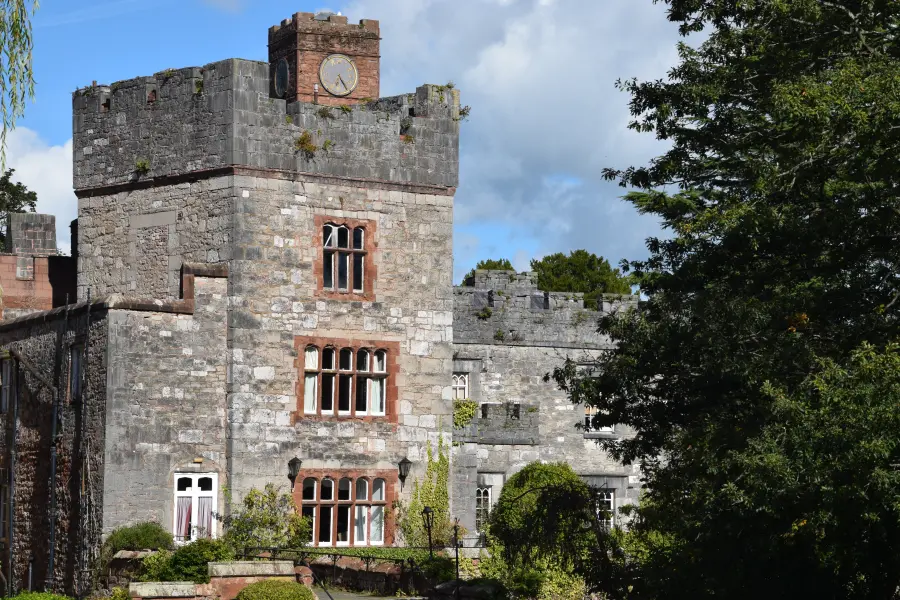
Image by Greg Mansfield
Location: Castle Street, Ruthin
Open: All reasonable times
Admission Fee: No, it’s a hotel
Parking: Free
Website: ruthincastle.co.uk
King Edward I of England knew exactly what he was doing when he ordered Ruthin Castle built in 1277. It was designed to be a key stronghold in his campaign to conquer Wales, positioned on a hill where it could dominate the surrounding landscape. The Welsh originally called it Castell Coch yn yr Gwernfor—the Red Castle in the Great Marsh—named for the distinctive color of its sandstone walls.
The castle passed to the de Grey family in 1282, whose ownership would shape its turbulent future. Master James of St George, the era’s most celebrated military architect, transformed the fortress by adding a twin-towered gatehouse and six round towers around its five-sided upper bailey. His improvements turned Ruthin into a nearly impregnable stronghold.
But nearly impregnable doesn’t mean invincible. When Reginald Grey, a descendant of the original owners, helped trigger the rebellion of Welsh leader Owain Glyndŵr in 1399, the castle found itself at the centre of yet another conflict.
The English Civil War brought Ruthin Castle to its knees. Parliamentary troops laid siege to the fortress for eleven grueling weeks before the defenders finally surrendered in 1646. Oliver Cromwell’s forces showed no mercy—they systematically demolished the castle, leaving it in ruins.
Ruthin Castle’s story could have ended there. Instead, the Cornwallis-West family saw potential in its ruins. In 1826, they built a large house here, incorporating what was left of the medieval structure.
Nearly a century later, in 1923, the building took on an unusual new role as Britain’s first private hospital dedicated to rare diseases. By the 1960s, it had transformed once again, this time into the hotel that welcomes guests today.
With bloodshed soaked into its stones, Ruthin Castle has become a magnet for the paranormal. The most feared spirit is the Grey Lady—sometimes called Lady Grey—whose story is as gruesome as it is tragic.
According to legend, Lady Grey was married to the castle’s second-in-command. When she discovered her husband was having an affair, she was consumed by jealous rage. She murdered his mistress with an axe. After Lady Grey’s death, the castle authorities refused to bury her within the walls. Now her spirit wanders the building and battlements endlessly, terrifying anyone unlucky enough to cross her path. Guests and staff frequently spot her in the Banqueting Hall, where another apparition—the White Lady—also appears.
The basement holds its own dark secrets. During the building’s time as a hospital, this area served as the mortuary where bodies awaited burial. Visitors still report hearing sounds of crying and moaning echoing from below, as though souls remain trapped in their final moments of agony.
The upper floors are also places where phantoms roam. Certain areas echo with unexplained footsteps. The sounds of children crying and running through empty corridors send chills down the spines of those who hear them. These aren’t just occasional occurrences—they happen regularly enough that hotel staff have come to expect them.


